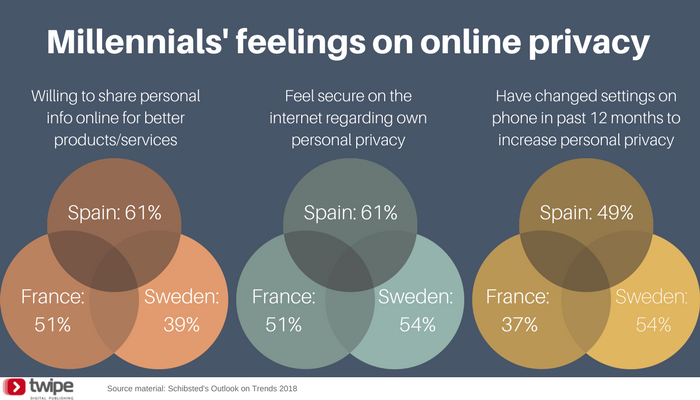Blog
AI, online integrity, and video: Schibsted’s Future Report 2018
It’s that time of the year again, when trend reports and future outlooks for 2018 start coming out. This week it was Schibsted’s Future Report 2018. At 89 pages, there is a lot to dig through so here are the top 3 takeaways for the publishing industry.
AI will allow us to focus on the most important work
Artificial intelligence features heavily on all future reports, but for good cause. As this report states, “Just like when electricity arrived, we can’t yet see the full effect.”
Machine learning systems can do the tedious work in news, leaving humans to do the interesting, challenging aspects. One example comes from Svenska Dagbladet, who has automated the selection of stories for their front page. By assigning ‘news value’ ratings to potential stories, combined with a time marker of how long the story will continue to be relevant to readers, a basic algorithm was created to direct the front page’s content. This frees up time for the journalists to focus on the stories themselves.
Artificial intelligence will be ubiquitous, wherever there is the internet (and in many places where there isn’t).
Azeem Azhar
Another example comes from Tim van Kasteren, senior manager in data science at Schibsted. He explained that his team is building predictive data models in order to better know their readers. As of now, their model works to predict gender, age, location, interest, and intent to look for a job, which allows advertisers to better target the right audience.
Growing demand for online integrity
The importance of data privacy is only growing in recent months, with the deadline for GDPR compliance coming closer and closer every day. (Reminder, it’s May 25, 2018!) To understand this need, Schibsted looked at how millennials, the first generation to grew up in a fully digital world, view online integrity.
Through a survey of millennials (born between 1982 and 2001) in Sweden, France, and Spain, the importance of online integrity for millennials was determined. In short, millennials do care about their online privacy and that they do worry about integrity online.

An interesting takeaway from this study is that millennials do view their personal data as a currency and are willing to spend it, in the right conditions. That’s why Dutch startup The Playwall is so innovative, giving readers the option to access paid-for content by paying with their data through answering a few questions. (For more on this concept, be sure to check out our Trends in Digital Publishing magazine next month, where we will have an interview with the founders of The Playwall.)
Pivot to video?
As is often the case, pivot to video is a cliche because it is true. We’ve heard more and more media companies decide to ‘pivot to video’ this year, including Mashable, Vice, and Mic. Will this trend continue in 2018? That’s unknown, but with the recent finding that Mic’s unique visitors dropped by 78% after pivoting to video, it doesn’t seem that pivot to video is the panacea many in the publishing industry had hoped it was.
Still, publishers need to meet their audience where they are, and there is a growing demand for video. Schibsted reports that in the past year 8% of Swedish 15-24 year olds have switched from ‘reading’ as their favourite way to consume news to ‘watching’. To reach this audience, Schibsted’s news sites Aftonbladet and VG have integrated videos as “a natural part of the news experience”.
For news organization that do want to integrate video into their news experience, it is important to adapt video to the device it is viewed on, like any other content. Niclas Bergstrom (Product manager video, Schibsted products and technology) and Lotta Folcker (Head of TV, Aftonbladet) have some tips:
- Videos need to have text, because very few people watch with sound.
- For mobile videos, it needs to be vertical, because this is the way people most like to hold their phone.
- Videos should be short and straight to the point.
Looking to the future
Not only trends, but also hope for the future of news in 2018 can be found in this Future Report. Svenska Dagbladet Editor in Chief Fredric Karén wrote that he is most excited about 2018 for “the fact that more and more readers find quality online journalism worth paying for”.
Even with thousands of free news sites to choose from, reader willingness to pay for quality journalism is growing. What can explain this trend? One factor is the constant onslaught of news, as Torry Pedersen, head of editorial at Schibsted Media, explained:
The general reader is suffering from information overload. Media is available everywhere, all the time.
Torry Pedersen
This is one reason we know editions will continue to survive in the stream of online news.
This article was written by Mary-Katharine Phillips, Media Innovation Analyst at Twipe from 2017 – 2021.
Other Blog Posts

Stay on top of the game
Subscribe to Twipe’s weekly newsletter to receive industry insights, case studies, and event invitations.
"(Required)" indicates required fields
